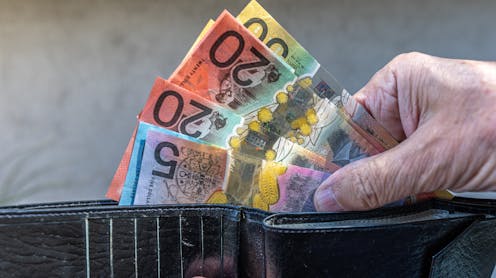A good credit card APR is a rate that's at or below the national average, which currently sits above 20 percent.
While there are credit cards with APRs below 10 percent, they are most often found at credit unions or small local banks.
If you don't have good credit, you’re likely to receive a higher credit card APR.
To qualify for a strong APR, practice good credit habits, including paying your credit card bill each month and keeping your credit utilization low.
Credit card holders, regardless of their credit history or spending habits, face one undeniable truth: credit card interest rates are high and can become quite expensive. With annual percentage rates (APRs) reaching record highs, carrying a balance on any card can lead to significant costs. If finding a lower interest rate is a priority in your search for a new credit card, there are options available, even in the current high-interest rate environment. Here’s what you need to know about securing a good credit card APR.
What is a Credit Card APR?
The APR, or annual percentage rate, represents the annualized interest charged on your credit card balances. This rate isn’t exclusive to credit cards; loans such as personal loans, mortgages, and auto loans also come with APRs. However, credit cards are notorious for having some of the highest APRs among borrowing options. If you fall behind on payments or only make the minimum required payments, your balances can quickly grow due to the high interest rates.
Here are some key points to understand about credit card APRs:
Credit cards have variable APRs. This means your interest rate can change over time, often with changes in the prime rate. If your card’s rate increases, you are typically given at least 45 days' notice.Credit card interest compounds daily. Interest on any balance left on your card after the monthly due date accrues at a daily rate, causing debt to grow rapidly.Credit card APRs are based on the prime rate. Your card’s interest rate is usually tied to the Federal Reserve’s target federal funds rate, with issuers adding a certain percentage to the prime rate to determine their variable APR range.
Does Your Credit Card Have a Good APR?
Credit card APRs vary significantly, making it hard to define one rate as universally “good.” Even cards marketed to the most creditworthy individuals can carry high interest rates. Before applying for a new card, review the variable APR range listed on the issuer’s website. The rate you receive will likely fall within this range and depend on factors such as your credit history, the type of card, and more.
Comparing rates between cards can help you identify what qualifies as a "good" rate for you. If you spot a card with an unusually high APR, consider avoiding it as it may continue to rise, potentially accompanied by additional fees.
Average Credit Card Interest Rates
One way to gauge if your APR is competitive is to compare it to the average rates. According to recent Federal Reserve data, the current average credit card interest rate in the U.S. is approximately 21.19%. However, for those who carry a balance, the average jumps to 22.77%. In today’s economic climate, you are likely to face an interest rate above 20% on any credit card.
4 Types of Credit Card APRs
Credit card APRs can apply to different types of transactions, each with its own rate:
Purchase APR: This is the standard rate applied to new purchases made with your card. Typically, you have 21-30 days from the end of your billing cycle to pay off purchases without interest. Your rate will depend on the issuer’s stated variable APR range and your creditworthiness.
Cash Advance APR: Cash advances are essentially short-term loans against your credit line with no grace period, making them highly expensive. Interest on these advances begins accruing immediately at a rate typically higher than the standard purchase APR.
Introductory APR: Many cards offer introductory 0% APRs on purchases, balance transfers, or both for a set period, usually 12 to 21 months. These offers are ideal for paying off large purchases or existing debt without interest, but it’s crucial to understand the terms fully before applying.
Penalty APR: Penalty APRs are imposed when you miss payments or have returned payments, leading to higher costs. However, some issuers may reduce this rate after consecutive on-time payments.
How to Get a Lower Credit Card APR
Even in today’s high-rate environment, there are ways to improve your chances of securing a lower APR:
Improve Your Credit Score: Your credit history heavily influences your APR. A strong record of on-time payments can help you qualify for lower rates.Consider the Card Type: Different types of cards come with varying APR ranges. High-value rewards cards often have higher rates, while beginner or credit-building cards may offer slightly lower APRs.Talk to Your Issuer: You might be able to negotiate a lower APR on an existing card by contacting your issuer, especially if you’ve improved your credit score since opening the account.
One More Thing: Avoid Interest Altogether
Regardless of how “good” your APR is, paying interest on your balances will always cost you more in the long run. The best strategy is to pay your balances in full and on time each month, thus avoiding interest charges entirely. Even if avoiding interest every month isn’t feasible, try to minimize your debt quickly to reduce the impact of high-interest rates over time.
By understanding how APRs work and taking proactive steps to manage your credit responsibly, you can make more informed decisions about your credit card usage and avoid costly interest charges.


















 English (United States) ·
English (United States) ·